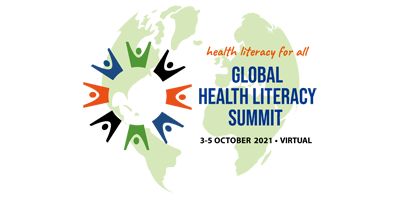Abstract Preview
Abstract
|
Title Determinants of health and e health literacy in young adult women |
|
Type Oral Presentation Only |
|
Theme Global Health Literacy Summit 2021 |
|
Topic Others |
Authors
|
Main Author Mariusz Duplaga1 |
|
Presenting Author Mariusz Duplaga1 |
|
Co-Author |
Authors' Institution
|
Department / Institution / Country Department of Health Promotion and e-Health, Institute of Public Health / Jagiellonian University Medical College / Poland (Polska)1 |
|
Abstract Content (abstracts should be written in Size 11 font, Arial font style) Introduction. Fitness influencers are able to accumulate millions of followers. It is hypothesised that the content of the fitness influencers websites (FIW) may incite positive health behaviours. So far, there were no reports about how using FIW impacts health and e-health literacy. This study was focused on the analysis of the association of the level of health (HL) and e‑health literacy (eHL) and the use of FIW, sociodemographic variables and other health-related items. Methods. The analysis presented in this paper was based on the data from a survey in a nationally representative sample of young adult women 18-35 years old, being Internet users. HL of respondents was measured with the 16-item European Health Literacy Survey questionnaire and eHL with eHealth Literacy Scale. The linear regression models were developed for HL and eHL as dependent variables. Results. From 1002 respondents, 29.3% (n=1030) accessed FIW at least once weekly. The use of FIW was significantly associated with eHL (beta=0,10, p=0.01), but not with HL (beta=-0,03, p=0.42). HL was likely to be lower in inhabitants of rural than urban areas, in those living in households with the highest than medium net income (beta=‑0.11, p=0.003), and in singles than married women (beta=-0.08, p=0.018). Those with the highest self-reported health status were more likely to have higher HL than those with not satisfactory or only satisfactory health status (beta=0.10, p=0.009). Higher eHL was found among respondents with bachelor’s degree in comparison to those with a secondary level of education (beta=0.09, p=0.005), and in those spending on the Internet more than 10 hours than 3 hours weekly (beta=0.08, p=0.028). Lower eHL was observed among respondents not willing to provide the information about the income in comparison to those with a medium level of income (beta=-0.11, p=0.001), in students (beta=-0.12, p=0.001) and vocationally inactive respondents (beta=-0.10, p=0.006) in comparison to employed. In conclusion, the use of FIW is associated with eHL but not with HL. It also seems that the HL and eHL differ as to their determinants. Furthermore, observed relationships are rather complex. |
Requires Audio or Video system for Presentation?: No
